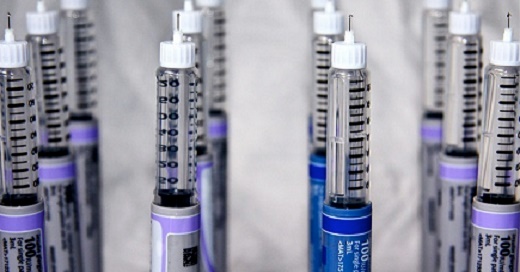The aim of insulin replacement therapy is to mimic endogenous insulin secretion profiles. A mealtime insulin should ideally be absorbed very fast after injection to counteract the rise in blood glucose with food consumption. After almost 100 years of insulin development, another major milestone in insulin development has been achieved with the 2017 market approval of the first ultra-fast acting insulin.
Speeding up insulin absorption
Various approaches can and are used to speed up insulin absorption. For more than twenty years patients are using fast-acting insulin analogues (aspart, glulisine, lispro), which are slightly altered forms of human insulin. Upon injection of an analogue, the insulin hexamers dissociate more rapidly into smaller monomers, which can be readily absorbed into the circulation. Approaches to increase the speed of insulin absorption further are using a different route of administration (e.g. pulmonary, intraperitoneal), are altering the injection site through for example the application of heat or administration of hyaluronidase, or are making changes to the current fast-acting insulin formulations by adding excipients that promote absorption.
Three of these ultra-fast insulin formulations, Adocia’s Biochaperone lispro, Eli Lilly’s LY900014 and Novo Nordisk’s Faster aspart, have been tested clinically and one (faster aspart) has received market approval in the EU, US and Canada this year. Biochaperone lispro and LY900014 are currently completing phase 2 and expected to progress into phase 3 soon. Biochaperone lispro is a formulation of insulin lispro with a specific biochaperone molecule that together form a reversible complex with enhanced diffusion characteristics. LY900014 is insulin lispro in a formulation with treprostinil and citrate: Treprostinil has been shown to increase the local validation, whereas citrate increases the vascular permeability. Faster aspart is insulin aspart in a formulation with niacinamide and L-arginine: Niacinamide promotes even faster dissociation of the insulin hexamers, while L-arginine was added for stability.
 Image Credit: https://www.flickr.com/photos/feathy123/3949274968/
Image Credit: https://www.flickr.com/photos/feathy123/3949274968/
How fast is ultra-fast insulin?
Profil has conducted clinical pharmacology trials with all three ultra-fast insulin formulations. These studies typically involved a single injection of the ultra-fast insulin with frequent pharmacokinetic blood sampling to assess the speed of absorption. The euglycemic glucose clamp method was used simultaneously to measure the blood glucose lowering effect. All these investigations used a fast-acting analogue as active comparator; a head-to-head study of the three ultra-fast insulin formulations has yet to be conducted. What these studies have shown is that the ultra-fast formulations are generally absorbed 10 minutes faster than the current fast-acting insulin analogues, resulting in more than double the amount of insulin being absorbed within the first 30 minutes after injection. Similarly a faster and greater early glucose lowering effect is observed. Not only is the timing of absorption and insulin action improved immediately upon injection, insulin concentrations start to decline faster after reaching a peak level, overall closer mimicking the endogenous insulin response in healthy people.
Biochaperone lispro, LY900014 and faster aspart have all demonstrated that the improved timing of insulin delivery results in superior control of postprandial glucose excursions compared to conventional insulin lispro or aspart as fast-acting comparator. The most robust data on postprandial glucose lowering is available from faster aspart’s phase 3 programme in which 1143 patients with type 1 diabetes (onset 1) and 689 patients with type 2 diabetes (onset 2) were enrolled. Faster aspart significantly lowered the rise in plasma glucose 1 hour after a meal compared to conventional insulin aspart, -21.2 mg/dL in type 1 patients and -10.6 mg/dL in type 2 patients.
Ultra-fast insulin for continuous and automated insulin delivery
Data on ultra-fast insulin for use in pumps is limited to a few published studies with faster aspart. The results of these studies indicate that speed of absorption and early glucose lowering effect of the ultra-fast formulation are even more advantageous compared to conventional aspart when given as continuous infusion compared to a single injection. A confirmatory phase 3 trial has been completed recently and should provide further insight into the clinical benefits of faster aspart in pumps. For automated insulin delivery devices (artificial pancreas) there is a great need for insulin formulations that are absorbed and eliminated fast. Due to the current delay in insulin absorption and the relatively long duration of action, artificial pancreas devices are slow to respond to glucose changes outside a target window and sophisticated algorithms are needed to predict the course of glucose concentrations in the (near-)future. Especially during dynamic phases such as after eating a meal or during exercise, artificial pancreas systems can’t control blood glucose as well as desired. The enhanced responsiveness of new ultra-fast insulin formulations should allow for better control, ideally leading to devices that do not require any manual user intervention such as a pre-meal bolus. How much the new ultra-fast formulations can contribute to achieve the goal of fully automated control remains to be investigated, but the recent progress demonstrates that achieving the goal seems more of a matter of when not if.




